According to the whistle-blower Mordechai Vanunu, a nuclear technician working in Israel’s Dimona plutonium reprocessing plant, Israel has enough plutonium for about 200 bombs and it has produced more than 100 nuclear warheads. Lest the report of a whistle-blower be doubted, I must mention that his estimates are corroborated by nti.org (Nuclear Threat Initiative), a respected non-governmental organization that devotes itself to threats posed by weapons of mass destruction.
Israel’s nuclear program is centred at the Negev Nuclear Research Centre outside the town of Dimona, where a French-supplied plutonium production reactor went critical in the early 1960s. Based on estimates of the plutonium production capacity of the Dimona reactor, Israel is believed to have manufactured around 840 kg of weapons-grade plutonium, enough for an estimated arsenal of 100 to 200 nuclear warheads.
Israel had reportedly assembled its first nuclear device in late May 1967 itself in the run-up to the Six-Day War.
Bruce Riedel of the Brookings Institution says that Israel possesses the capability to deliver its nuclear weapons through the Jericho mid-range missile system developed initially with full support of the French company Dassault, and using cruise-missiles on German-built submarines besides the American F-15 and F-16 aircraft. John Steinbach confirms this in his paper ‘The Israeli Nuclear Weapons Program’ and adds that they have chemical and biological weapons too.
Maintaining Both Great Secrecy and Ambiguity for Decades Altogether
Israel has never formally acknowledged the existence of its nuclear arsenal. For decades, Israel has wrapped its nuclear program in a policy it calls amimut, meaning opacity or ambiguity. By giving out several not-so-subtle hints but still not confirming that it has nuclear weapons, Israel has, in its wisdom, sought to deter its enemies from a major debilitating attack on it; at the same time, it hopes that the opacity or the ambiguity would deprive them of a legitimate reason to make a concerted effort to develop a matching nuclear arsenal.
The policy of never publicly confirming the existence of nuclear weapons dates from a political deal between the United States and Israel in the late 1960’s. It has also helped Israel avoid the scrutiny—and occasional disapprobation—applied to the world’s eight acknowledged nuclear powers. Had the truth ever leaked out or officially admitted, the West would have found it politically difficult to continue to help the Israelis in so many ways.
Julian Borger noted in the Guardian in 2014 that Western governments have actually upheld this air of secrecy and opacity. In 2009, when a veteran Washington reporter, Helen Thomas, asked Barack Obama in the first month of his presidency if he knew of any country in the Middle East with nuclear weapons, he dodged the question by saying only that he did not wish to ‘speculate.’
Now, at this stage, it is too late for the US to come clean on it for fear of compromising the very basis of US-Israel relationship. The Israelis, knowing it well that they had used foul and dishonourable means to acquire nuclear weapons,get very jittery about their ‘worst-kept secret’.
So much so that when in 2013, Avraham Burg, a former speaker of the Israeli Knesset, during a conference in Haifa,spoke of Israel having nuclear and chemical weapons and called the policy of ambiguity ‘out-dated and childish’, there was a formal demand by a right-wing conservative group for his trial on charges of treason.
How They Did It?
According to Avner Cohen, the Israeli-American nuclear historian, the idea that Israel should acquire nuclear-weapon capability is as old as the state itself. Three men set the Israeli nuclear project in motion: the nation’s political leader David Ben Gurion; its chief scientist Ernst David Bergmann; and its chief executive officer Shimon Peres. The top secret program was called Operation Samson.
Of Peres’s many indispensable contributions to making Israel a nuclear power, none is more important than his forming and cementing the nuclear relationship between France and Israel. Peres was the architect of the Franco-Israeli alliance that made the Dimona deal possible. In Dimona, French engineers poured in to help build Israel a nuclear reactor and a far more secret reprocessing plant capable of separating plutonium from spent reactor fuel.
Seymour Hersh writes in his book ‘The Samson Option’, “French workers at Dimona were forbidden to write directly to relatives and friends in France and elsewhere, but sent mail to a phony post-office box in Latin America.”
The Franco-Israeli alliance was so thick that initially the Americans were also kept in the dark.However, as more and more evidence of Israel’s nuclear programme emerged through photographs taken by the famous U-2 spy planes, the US role progressed from unwitting dupe to reluctant accomplice.
In 1968 the then CIA director Richard Helms told President Johnson that Israel had indeed managed to build nuclear weapons and that its air force had conducted sorties to practise dropping them.By the time Nixon became President, the United States, under the obvious pressure of the Zionist lobby, moved from objecting to Israel’s nuclear weapons to protecting the program.
In 1971, the Nixon administration approved the sale of hundreds of krytrons (a type of high speed switch necessary to the development of sophisticated nuclear bombs) to Israel. Mark Gaffney says that the Israeli nuclear program was possible only because of calculated deception on the part of Israel, and willing complicity on the part of the US.
How They Acquired Uranium Clandestinely?
Possessing advanced nuclear technology and world class nuclear scientists, Israel was confronted early with a major problem—how to obtain the necessary uranium. They are a small country and their own deposits are hardly sufficient.
For this purpose, they created an elaborate spy ring called Lakam. In 1968, it organised the disappearance of an entire freighter full of uranium ore in the middle of the Mediterranean—it became famous as Operation Plumbat.
In the late 1960s, Israel developed close ties with South Africa in a quid pro quo arrangement whereby Israel supplied the technology and expertise for the “Apartheid Bomb”, while South Africa provided the uranium. Israel had few qualms about proliferating nuclear weapons know-how and materials, giving South Africa’s apartheid regime help in developing its own bomb in the 1970s in return for 600 tons of uranium oxide (yellowcake). During 1963-64, the Israeli government had secretly acquired 80-100 tons of Argentine yellowcake also.
John Steinbach says that some of the fissile fuel in Israel’s arsenal was weapons-grade uranium stolen with the blessings of the CIA under America’s nose from a processing plant in Pennsylvania called Nuclear Materials and Equipment Corporation (NUMEC). NUMEC diverted hundreds of pounds of enriched uranium to Israel from the mid-50s to the mid-60s.
How They Tested Their Nuclear Weapons Secretly?
Israel could have obviously not tested its weapon on its own territory without precipitating a crisis.The only logical solution was to conduct them somewhere else. That’s precisely what they did. Lt. Col. Warner D. Farr, in his report titled ‘The Third Temple’sHoly of Holies:Israel’s Nuclear Weapons’ prepared for the USAF Counter-proliferation Center discloses that they got their weapons’ designs validated along with France to conceal them! According to Hans M. Kristensen and Robert S. Norris writing in the Bulletin of the Atomic Scientists, Israel had unrestricted access to French nuclear test explosion data.
That was not all. As we mentioned above, they colluded with South Africa also for the test. The Israelis gave them the technology while the South Africans gave them the uranium and also a place to test. Because the Kalahari Desert of South African mainland was ruled out as it would have directly implicated South Africa, they found a place in the ocean.
On September 22, 1979, a US satellite, Vela 6911, detected the flashes very typical of a nuclear weapon test off the coast of South Africa.William Burr and seven associates, in their paper ‘Blast from the Past’ in Foreign Policy, besides a host of others conclude that an analysis of the evidence today points toa clandestine nuclear test, a Carter administration cover-up, and only one country that was willing and able to carry it out: Israel.Leonard Weiss of the Stanford University and the then Staff Director of the Senate Subcommittee on Energy and Nuclear Proliferation,says that the Carter Administration pressurized the Office of Science and Technology Policy (OSTP) to re-interpret the Vela 6911 data so as to throw doubts on their having clearly suggested a nuclear test. Victor Gilinsky, a former member of the Nuclear Regulatory Commission, also pointed out that the OSTP panel members were politically motivated.
Later, Israeli sources told Seymour Hersh that the flash picked up by the Vela satellite was actually the third of a series of Indian Ocean nuclear tests that Israel conducted in cooperation with South Africa. “It was a fuck-up,” one source told him. “There was a storm and we figured it would block Vela, but there was a gap in the weather—a window—and Vela got blinded by the flash.”
The Israeli Nuclear Arsenal
Mordechai Vanunu had spoken of Israelis having made the hydrogen bomb as well. However, in the absence of any other information at all, it is difficult to conjecture. Probably they do not have because no one can make hydrogen bombs without some tests and there is absolutely no information on any Israeli test after the Vela incident.
Generally, the size of their nuclear arsenal is placed at 100-200 warheads. This may be compared with the nuclear arsenals of Pakistan (165) and India (150). Hans M. Kristensen and Robert S. Norris argued that the numbers might be smaller because Israel would like to keep the size of its nuclear arsenal in line with its number of available long-range delivery systems, namely the ballistic missiles.
But there is another complicating factor. Prima facie, its declared adversaries, namely Iran and several Arab nations are within the range of MRBM (Medium Range Ballistic Missiles). Officially, the Israelis would not acknowledge the existence of any missile other than a short range missile (280 km range) called LORA (Long Range Artillery).
Why is then Israel developing or has developed IRBMs (Intermediate Range Ballistic Missiles) like the Jericho-3? Mark Fitzpatrick argues for the International Institute for Strategic Studies (IISS) that the answer may be that Israel, as nation obsessed with its security, always considers worst-case scenarios and plans for contingencies. Nuclear-armed Pakistan, which lies 4,000 km away, may be the reason because until such time that another Islamic nation builds nuclear weapons, Pakistan remains the sole Islamic power with nuclear weapons and is regarded by many as the de facto ‘Champion of Islam’, which could be called upon to rise if another Islamic nation faced annihilation by Israel.
Going by their cult of secrecy, little is known about the Jericho-3. However, it is believed to be based on their civilian space launch vehicle Shavit. Israel has announced 11 launches of the Shavit from Palmachim airbase, nine of which successfully placed a payload into orbit.
Mystery shrouds everything. Towards the end of April 2021, people had captured footage of a large cloud of smoke following a reported explosion like sound at an Israeli defence-industry facility. Jeffrey Lewis explains that the cloud was produced by a routine static (ground) test of a solid-rocket motor. Whether the motor is intended for an advanced Shavit or a new version of the Jericho is left to speculation.
Under these circumstances, I fully agree with John Steinbach that unless and until the world community confronts Israel over its covert nuclear program it is unlikely that there will be any meaningful resolution of the Israeli-Arab conflict.
Also Read:
~ News4masses is now also on Google news
~ If you want to contribute an article / story, please get in touch at: news4masses[at]gmail[dot]com

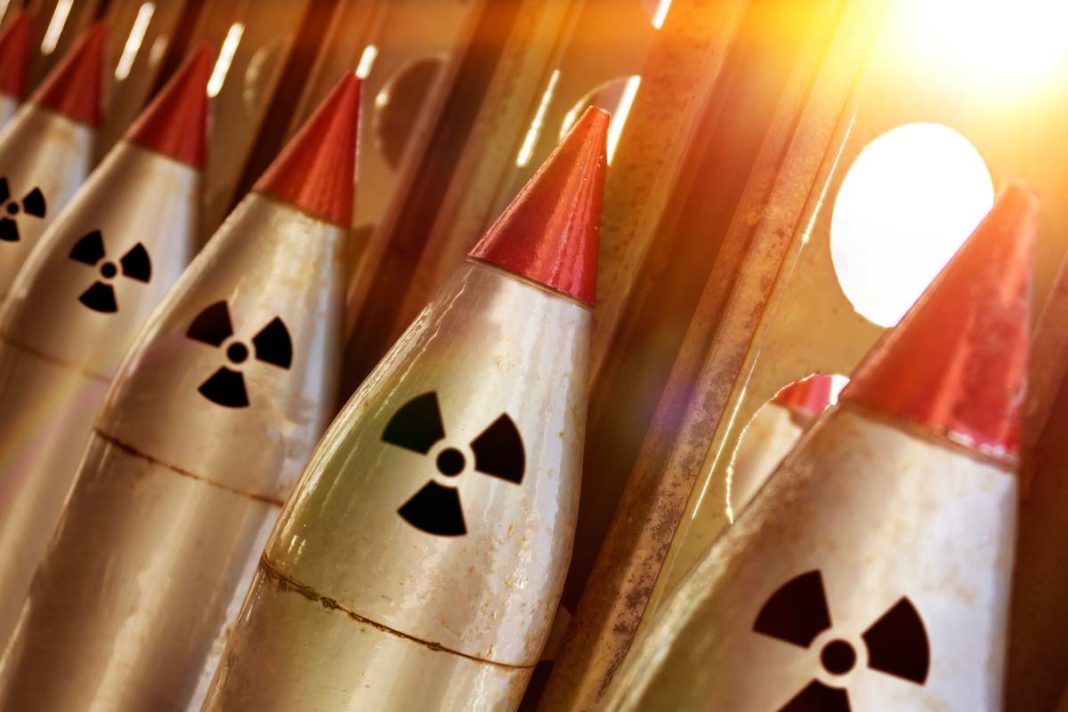
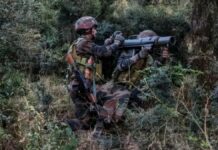



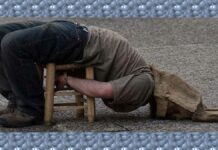


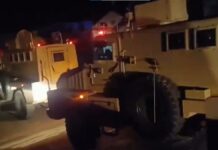


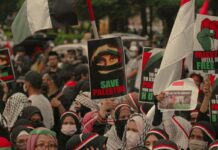







[…] ~ यदि आप योगदान देना चाहते हैं और विशिष्ट विशेषज्ञता प्राप्त करना चाहते हैं, तो कृपया यहां संपर्क करें: [email protected] […]